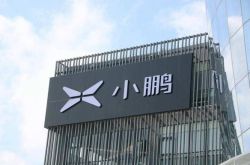What Distinguishes DeepSeek, BAT (excluding Baidu), and iFLYTEK in China's AI Landscape?
![]() 05/14 2025
05/14 2025
![]() 579
579

On the domestic AI stage, DeepSeek, Alibaba, ByteDance, Tencent, and iFLYTEK fiercely compete, crafting a mesmerizing spectacle.
This competition, akin to an "arms race," transcends mere market rivalry; it's a profound game of technology, innovation, and future strategy. Each of these five major players showcases unique strengths and characteristics, sprinting ahead in their lanes and collectively fueling the domestic AI wave.
So, what sets them apart as indispensable players in this contest?
Tech Pioneer: DeepSeek's Trailblazing Path
Amidst the domestic AI fray, DeepSeek swiftly emerged in the large model arena through radical technological innovation. With open-source flagship models comparable to GPT-4 and Claude 3.5 Sonnet, it attracted a vast developer and user base, becoming a "dark horse" that stirred the market.
DeepSeek's edge lies in its innovative adoption of a new architectural model that significantly boosts performance. It efficiently processes massive data and complex tasks, excelling in fields like natural language processing and image recognition, achieving near-top-tier results.
Crucially, through model architecture innovation and algorithm efficiency enhancements, DeepSeek drastically reduced computational power demands, further lowering large model training costs. In an industry where training costs remain high, this technological edge grants DeepSeek a substantial cost advantage in market competition, making it stand out in the domestic AI fray.
Moreover, DeepSeek vigorously cultivates an open-source ecosystem, opening its technological achievements to global developers.
This open-source ecosystem transforms DeepSeek from an isolated tech R&D firm into a hub for technological innovation. As developers use and promote its open-source models, more enterprises and individual users are drawn to DeepSeek's technology, fostering a virtuous cycle.
However, despite DeepSeek's significant technological and ecological advantages, its "free basic technology + paid value-added services" commercialization model still faces hurdles.
DeepSeek primarily relies on nurturing its developer ecosystem over time to explore commercialization opportunities, a process fraught with uncertainty. Cultivating a developer ecosystem demands substantial time and effort, and the developer community's needs and behaviors are complex and diverse. Achieving stable and sustainable commercialization from this ecosystem has become a major challenge for DeepSeek.
Ecological Giants: Alibaba, ByteDance, and Tencent's Scenario Integration Strategies
Unlike DeepSeek, giants like Alibaba, ByteDance, and Tencent leverage their vast ecological matrices to embed AI technology into diverse business scenarios like e-commerce, social media, and content creation, aiming to build formidable barriers.
Alibaba, leveraging the Tongyi Qianwen open-source community and Alibaba Cloud's robust computing power, coupled with its To B integration capabilities, strides toward becoming an AI infrastructure provider akin to "water, electricity, and coal," a crucial layout for dominating the AI era.
Firstly, Alibaba Cloud's formidable computing power creates an insurmountable barrier within the industry. Secondly, the Tongyi Qianwen open-source community garners the attention and usage of numerous developers and enterprises, expanding Alibaba's technological influence. Through its open platform, Alibaba packages AI technology into various APIs and solutions for B-end customers, further broadening its commercial horizons.
However, while Alibaba has Pingtouge Semiconductor focusing on general-purpose computing chips, its progress in AI-specific chip R&D is somewhat sluggish, and it has yet to establish a mature and comprehensive chip ecosystem. This limits the in-depth expansion of its AI technology at the hardware level.
Tencent, leveraging its ecosystem of over 1 billion users on WeChat, QQ, and other platforms, integrates AI through scenario-based applications, enabling AI functions to branch out within its diverse business portfolio, contributing a unique "Tencent paradigm" to domestic AI development.
Leveraging its data, scenario, and technological iteration advantages accumulated in social media, gaming, and other fields, Tencent swiftly built a vast AI application ecosystem. Additionally, through the Hunyuan Large Model Training Camp, Tencent provides technical resources, traffic support, and beta testing opportunities for ecological partners, aiding them in deploying large models into real-world industrial scenarios and further expanding the AI commercialization landscape.
Nevertheless, Tencent relies on external collaboration for chip R&D, and progress on its self-developed AI inference chip "Zixiao" is limited. Its ecological integration capabilities also need strengthening. In AI-specific computing power deployment, it slightly lags behind Alibaba Cloud, somewhat constraining the large-scale and efficient application of its AI technology.
Relying on its massive user and content ecological advantages, ByteDance leverages AI to empower its products and explores diverse innovative application scenarios, demonstrating robust expansion capabilities.
In technology application, ByteDance ingeniously integrates AI into various products, enhancing their competitiveness and appeal, opening up unique growth avenues. In R&D, ByteDance has launched multimodal large models like the Yunque language model and BuboGPT, actively deploying AI-native applications, constructing a "super AI application factory" that offers diverse solutions to users across industries.
It's worth noting that ByteDance's strengths are more evident in vertical fields' deep optimization and innovative applications. At the large model technology level, it lags slightly behind Alibaba, Tencent, and iFLYTEK.
In summary, Alibaba, ByteDance, and Tencent each have their strengths in AI and face different challenges. As technology continues to iterate and the market evolves, how they overcome their limitations, further expand AI application boundaries, and enhance commercial value will be crucial in determining their positions in the domestic AI landscape.
iFLYTEK: Another Dimension in China's AI Evolution
While others chase OpenAI, iFLYTEK quietly carved out an AI evolution path with Chinese characteristics.
iFLYTEK's prominence in domestic AI competition is inseparable from its robust and fully controllable "computing power - algorithm - data" full-stack system.
In computing power, iFLYTEK deeply collaborated with Huawei to build a "Ascend + Wanka Cluster" computing power base, achieving end-to-end localization adaptation from the chip layer to the application layer, breaking domestic AI enterprises' heavy reliance on NVIDIA chips. In algorithms, the Spark X1 deep reasoning model adopts a novel neural network architecture, with general task effects comparable to OpenAI GPT-4 and DeepSeek R1. In data, iFLYTEK deeply cultivated education, healthcare, office, and other fields, accumulating massive industry data to nourish model training.
Financial report data shows that iFLYTEK's 2024 R&D investment reached 4.58 billion yuan, accounting for 19.62% of revenue. Notably, last year's additional investment in large model R&D and application deployment hit 740 million yuan, an increase of 410 million yuan from the previous period. In Q1 2025, iFLYTEK continued strategic investments in Spark large model R&D, with R&D investment rising 12.5% year-on-year to 947 million yuan.
Additionally, iFLYTEK's "three commercial engines" of smart education, smart healthcare, and open platforms/industry solutions are independent value creation centers and infrastructure that feed back into the overall system, ultimately forming a commercial moat difficult for competitors to replicate.
Through the bidirectional empowerment of the developer ecosystem and industry solutions, iFLYTEK forged a closed loop from technology output to commercial realization. The vertical cultivation of smart education and smart healthcare accumulated rich industry data and application experience for the open platform, which, in turn, nurtures smart education and smart healthcare, enhancing product and service quality.
iFLYTEK's 2024 financial report data is particularly impressive: smart education, smart healthcare, and open platforms achieved revenue growth of 29.94%, 28.18%, and 31.33%, respectively.
It appears that iFLYTEK is scripting another chapter in China's AI evolution—achieving exponential commercial growth while maintaining core technology autonomy and controllability. This harmonious blend of technological idealism and commercial realism underpins its firm position in China's AI landscape.
Summary:
The essence of domestic AI competition is a three-dimensional game of technology, ecology, and scenarios. DeepSeek's technological breakthroughs, the ecological integration of giants, and iFLYTEK's deep cultivation of technology and scenarios collectively propel China's AI toward diverse integration.
In the future, the complementarity between technology open-sourcing and industry closed loops, alongside the synergy between autonomous computing power and scenario innovation, will determine whether China's AI can forge unique global competitive advantages. This "arms race" is not just a corporate contest but a crucial battle for China to compete for global AI discourse power.





